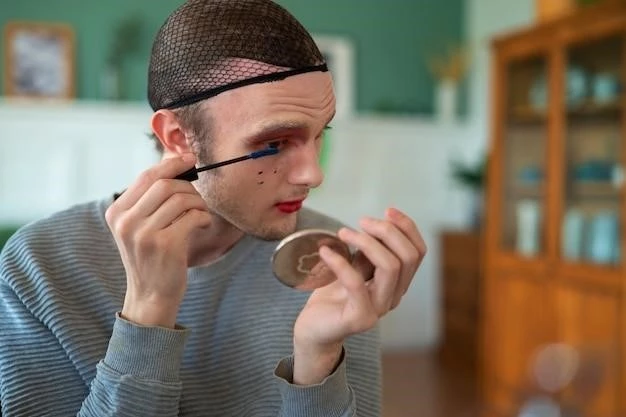Disease ⸺ Hypertrichosis Retinopathy Dysmorphism
I. Introduction to Hypertrichosis Retinopathy Dysmorphism Syndrome

Hypertrichosis Retinopathy Dysmorphism Syndrome is a rare genetic disorder characterized by excessive hair growth, eye abnormalities, and facial anomalies. This medical condition is inherited and often presents unique challenges for individuals affected by it.
Hypertrichosis refers to the abnormal amount of hair growth over the body, while retinopathy involves abnormalities in the retina that can impact vision. Dysmorphism pertains to atypical facial features that may be present in individuals with this syndrome.
Due to the complexity of symptoms associated with Hypertrichosis Retinopathy Dysmorphism Syndrome, a proper diagnosis is crucial. Understanding the genetic basis of the disorder is essential for determining an accurate treatment plan and predicting the prognosis for affected individuals.
Managing this syndrome requires a multidisciplinary approach, involving medical professionals specializing in genetics, ophthalmology, dermatology, and other relevant fields. With advancements in genetic testing and medical technologies, there are now more options available for diagnosis and treatment.
II. Understanding the Medical Condition
Hypertrichosis Retinopathy Dysmorphism Syndrome is a rare genetic disorder characterized by a combination of excessive hair growth, eye abnormalities, and facial anomalies. The excessive hair growth may involve areas not typically hairy in individuals without the syndrome.
Eye abnormalities associated with this syndrome can vary and may include retinopathy, which can impact vision. Facial anomalies can manifest as atypical features such as a broad nose, large ears, or a prominent forehead.
Individuals with Hypertrichosis Retinopathy Dysmorphism Syndrome often face challenges related to their physical appearance and potential vision problems. It is important to seek medical advice and support to understand the full extent of the condition and the implications it may have on overall health.
Given the rare nature of this syndrome, consulting with specialists in genetics, ophthalmology, and dermatology is crucial for an accurate diagnosis and appropriate management plan. Understanding the medical condition is the first step towards addressing the unique needs of individuals affected by Hypertrichosis Retinopathy Dysmorphism Syndrome.
III. Symptoms of Hypertrichosis Retinopathy Dysmorphism Syndrome
The symptoms of Hypertrichosis Retinopathy Dysmorphism Syndrome can vary in severity and presentation from one individual to another. Common symptoms include⁚
- Excessive Hair Growth⁚ Abnormal and excessive hair growth covering areas of the body where it typically does not occur.
- Eye Abnormalities⁚ This may include retinopathy, leading to vision problems or other ocular issues.
- Facial Anomalies⁚ Atypical facial features such as a broad nose, large ears, or a prominent forehead.
- Chromosomal Abnormalities⁚ Some individuals may exhibit genetic mutations or chromosomal abnormalities contributing to the syndrome.
- Developmental Delays⁚ In some cases, individuals may experience delays in physical or cognitive development.
- Skin Abnormalities⁚ Skin issues such as dryness, sensitivity, or abnormal pigmentation might also be present.
It is essential to consult with healthcare professionals if you or a loved one exhibit any of these symptoms to receive a proper diagnosis and establish a personalized treatment plan. Early detection and intervention can help manage the symptoms and improve the quality of life for individuals with Hypertrichosis Retinopathy Dysmorphism Syndrome.
IV. Diagnosis of the Syndrome
Diagnosing Hypertrichosis Retinopathy Dysmorphism Syndrome involves a comprehensive evaluation by healthcare professionals specializing in genetics, ophthalmology, and dermatology. The diagnostic process may include⁚
- Physical Examination⁚ Healthcare providers will assess the presence of excessive hair growth and facial anomalies.
- Eye Examination⁚ Ophthalmologists will examine the eyes for abnormalities, including signs of retinopathy.
- Genetic Testing⁚ Genetic analysis can identify specific gene mutations or chromosomal abnormalities associated with the syndrome.
- Medical History⁚ Discussing symptoms, family history, and past medical issues is essential for an accurate diagnosis.
- Imaging Studies⁚ Imaging tests like MRI or CT scans may be conducted to evaluate any structural abnormalities.
- Skin Biopsy⁚ In some cases, a skin biopsy may be performed to assess skin abnormalities.
A multidisciplinary approach to diagnosis is crucial given the complex nature of this syndrome. It is important to collaborate with a team of healthcare professionals to ensure a thorough evaluation and accurate diagnosis. Once diagnosed, individuals can work with their healthcare team to develop an appropriate treatment plan tailored to their specific needs.
V. Genetic Basis of the Disorder
Hypertrichosis Retinopathy Dysmorphism Syndrome is primarily caused by genetic mutations or chromosomal abnormalities that affect the development of hair follicles, the eyes, and facial structures. The syndrome is inherited in an autosomal dominant or recessive pattern, meaning it can be passed down from parents to their children.
Specific gene mutations associated with the syndrome can vary, contributing to the diverse range of symptoms observed in affected individuals. Researchers continue to explore the genetic basis of the disorder to enhance understanding and improve diagnostic capabilities.
Chromosomal abnormalities, such as extra or missing genetic material, can also play a role in the manifestation of Hypertrichosis Retinopathy Dysmorphism Syndrome. These abnormalities may impact multiple systems in the body, leading to the characteristic symptoms of the syndrome.
Genetic counseling is essential for individuals and families affected by this disorder to gain insight into the inheritance pattern, risk of passing the syndrome to future generations, and available testing options. Understanding the genetic basis of the disorder is crucial for making informed decisions regarding family planning and managing the medical needs of individuals with Hypertrichosis Retinopathy Dysmorphism Syndrome.
VI. Treatment Options for Hypertrichosis Retinopathy Dysmorphism
Treating Hypertrichosis Retinopathy Dysmorphism Syndrome involves a multidisciplinary approach aimed at managing the diverse symptoms associated with the disorder. While there is no cure for the syndrome, various treatment options can help individuals improve their quality of life and address specific manifestations of the condition.
Medical interventions for the syndrome may include⁚
- Management of Excessive Hair Growth⁚ Dermatological treatments such as laser hair removal, topical medications, or oral medications can help reduce unwanted hair growth.
- Eye Care⁚ Ophthalmologists play a crucial role in managing eye abnormalities associated with the syndrome through prescription eyewear, surgery, or other vision therapies.
- Genetic Counseling⁚ Genetic counselors can provide guidance on the genetic basis of the disorder, family planning options, and available testing.
- Psychological Support⁚ Coping with the physical and emotional challenges of Hypertrichosis Retinopathy Dysmorphism Syndrome may require counseling or mental health support.
- Symptom-Specific Treatments⁚ Addressing individual symptoms, such as skin abnormalities or developmental delays, may involve targeted therapies or interventions.
It is crucial for individuals with the syndrome to work closely with healthcare professionals to tailor a treatment plan that addresses their unique needs. Regular monitoring, follow-up appointments, and adjustments to the treatment approach may be necessary to ensure optimal management of Hypertrichosis Retinopathy Dysmorphism Syndrome.
VII. Managing Eye Abnormalities in Patients
Managing eye abnormalities in patients with Hypertrichosis Retinopathy Dysmorphism Syndrome is crucial for preserving vision and ensuring optimal eye health. Ophthalmologists play a key role in assessing, diagnosing, and treating eye conditions associated with the syndrome.
Key aspects of managing eye abnormalities in patients include⁚
- Regular Eye Examinations⁚ Routine eye check-ups are essential to monitor any changes in vision and detect eye abnormalities early.
- Treatment Plans⁚ Ophthalmologists can develop individualized treatment plans that may include prescription eyewear, medications, or surgical interventions.
- Visual Aids⁚ For individuals with vision impairment due to retinopathy or other eye issues, visual aids such as magnifiers or specialized glasses can improve visual acuity.
- Vision Therapy⁚ Specialized vision exercises or therapies may be recommended to improve eye coordination and strengthen visual skills.
- Lifestyle Modifications⁚ Adopting healthy habits like protecting the eyes from UV light, maintaining proper eye hygiene, and following a balanced diet can support overall eye health.
Individuals with Hypertrichosis Retinopathy Dysmorphism Syndrome should work closely with their ophthalmologist to develop a comprehensive eye care plan tailored to their specific needs. Regular follow-up appointments and adherence to the recommended treatments are essential for managing eye abnormalities effectively and preserving vision for the long term.
VIII. Coping with Facial Anomalies
Coping with facial anomalies associated with Hypertrichosis Retinopathy Dysmorphism Syndrome can present unique challenges, both physically and emotionally. It is essential for individuals affected by the syndrome to understand that their facial features do not define their worth or identity.
Here are some strategies to cope with facial anomalies⁚
- Self-Acceptance⁚ Embracing one’s unique appearance and recognizing that beauty comes in many forms can help promote self-acceptance.
- Educating Others⁚ Sharing information about the syndrome with family, friends, and peers can foster understanding and empathy.
- Seeking Support⁚ Connecting with support groups or mental health professionals can provide a safe space to discuss feelings and challenges related to facial anomalies.
- Focusing on Strengths⁚ Recognizing personal strengths, talents, and accomplishments can boost self-esteem and confidence.
- Celebrating Uniqueness⁚ Embracing individuality and celebrating the diversity of human appearance can be empowering.
- Accessing Resources⁚ Utilizing resources such as counseling, therapy, or self-help materials can enhance coping mechanisms and emotional well-being.
It is essential for individuals with Hypertrichosis Retinopathy Dysmorphism Syndrome to surround themselves with a supportive network of loved ones and healthcare professionals who understand and respect their journey. By focusing on self-care, self-acceptance, and resilience, individuals can navigate the challenges of facial anomalies and embrace their unique identity with confidence.
IX; Prognosis and Outlook for Individuals with the Syndrome
The prognosis and outlook for individuals with Hypertrichosis Retinopathy Dysmorphism Syndrome can vary depending on the severity of symptoms, the presence of complications, and the individual’s response to treatment. While the syndrome presents challenges, it is possible to manage the symptoms and improve quality of life with proper care and support.
Key factors influencing the prognosis and outlook include⁚
- Early Detection and Intervention⁚ Early diagnosis and timely intervention can help address symptoms and complications before they progress.
- Individualized Treatment Plans⁚ Tailoring treatment approaches to meet the specific needs of each individual can improve outcomes and enhance quality of life.
- Regular Monitoring⁚ Ongoing monitoring by healthcare professionals can track disease progression, assess treatment effectiveness, and address new developments promptly.
- Genetic Counseling⁚ Understanding the genetic basis of the disorder and its implications for future generations can provide valuable insight for individuals and families.
- Psychological Support⁚ Accessing mental health services and emotional support can help individuals cope with the challenges of the syndrome and promote overall well-being.
- Lifestyle Modifications⁚ Adopting a healthy lifestyle, including proper nutrition, exercise, and skincare, can contribute to better overall health and well-being.
By taking a proactive approach to managing Hypertrichosis Retinopathy Dysmorphism Syndrome, individuals can lead fulfilling lives and navigate the unique aspects of the condition with resilience. It is important for individuals and their caregivers to stay informed, seek appropriate care, and remain optimistic about the future despite the challenges posed by the syndrome.
X. Conclusion
In conclusion, Hypertrichosis Retinopathy Dysmorphism Syndrome is a rare genetic disorder characterized by excessive hair growth, eye abnormalities, and facial anomalies. While the syndrome presents unique challenges, early diagnosis, multidisciplinary care, and individualized treatment plans can help individuals manage symptoms and improve their quality of life.
Understanding the genetic basis of the disorder, addressing eye abnormalities, coping with facial anomalies, and maintaining a positive outlook are essential components of managing Hypertrichosis Retinopathy Dysmorphism Syndrome. By fostering self-acceptance, seeking support, and accessing appropriate resources, individuals can navigate the complexities of the syndrome with resilience and confidence.
It is important for individuals with the syndrome to work closely with healthcare professionals, stay informed about the latest advances in treatment, and prioritize self-care and well-being. By advocating for themselves, building a support network, and embracing their unique identity, individuals with Hypertrichosis Retinopathy Dysmorphism Syndrome can lead fulfilling lives and face the future with optimism.
As research continues to expand our understanding of genetic disorders and personalized medicine, the prognosis for individuals with Hypertrichosis Retinopathy Dysmorphism Syndrome continues to improve. By taking proactive steps, staying informed, and seeking holistic care, individuals affected by this rare syndrome can effectively manage their condition and thrive despite its challenges.
